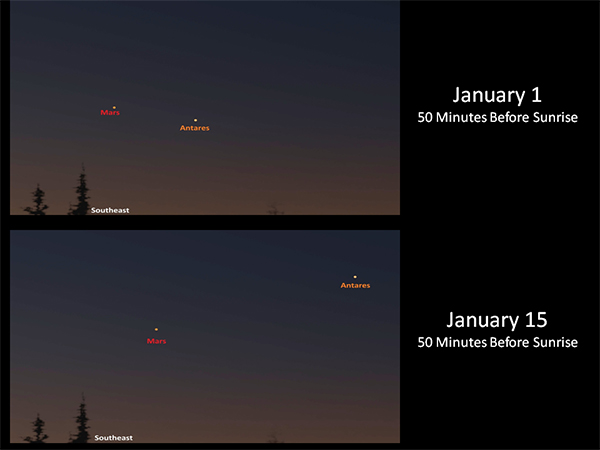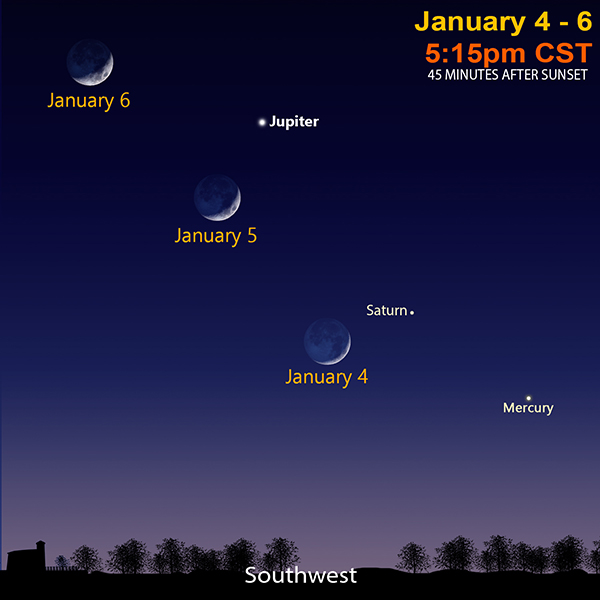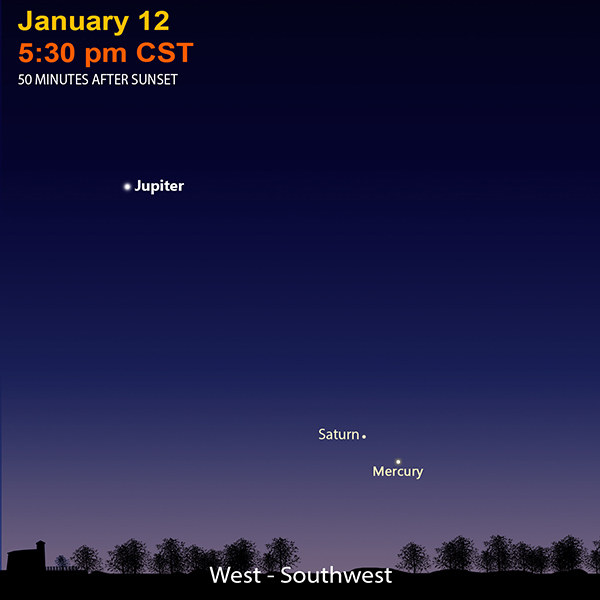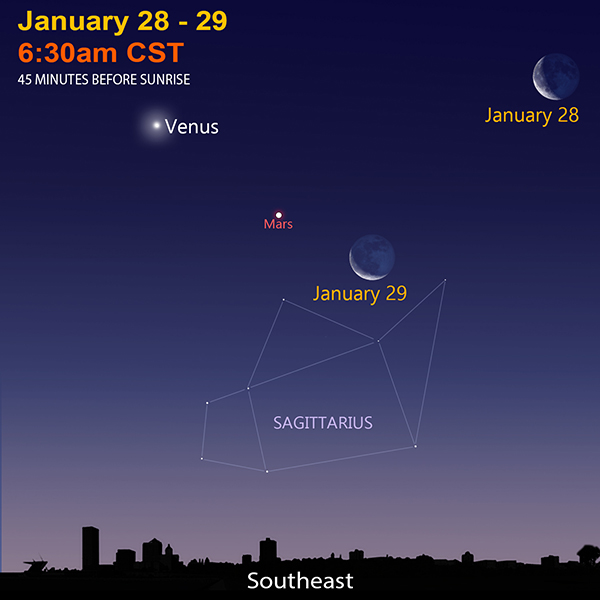Cosmic Curiosities
“The Earth is what we all have in common.”
- Wendell Berry, American writer
The Three Faces of Venus
Humans have been looking at planet Venus, the “wandering star,” for thousands of years. Perceptions vary from person to person, culture to culture, and Venus views change over time.
Here are three faces I see when I ponder Venus…
SKY FACE
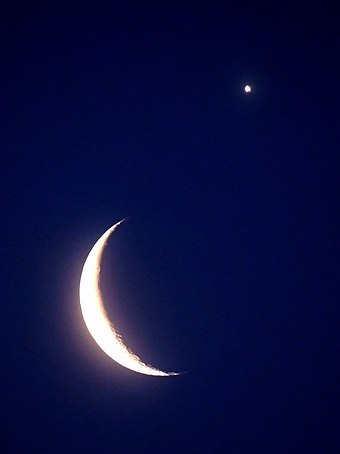
Gazing at Venus is always striking, especially near a crescent moon. It’s easy to see why Greek and Roman mythology saw this planet as the goddess of love and beauty. In China, Venus is Taibai Jinxing, which means “Great White Golden Star.” That seems appropriate. We often joke at the Planetarium here that Venus is the number-one reported UFO… But it’s true.
We know Venus is insanely bright for three reasons: closeness to Earth, fairly large size, and reflective clouds. Its brilliance is so great, it can be seen with the sun in the sky, but it’s not easy; the brightness of Venus is only bested by the sun and moon.
Venus has a smaller orbit, being closer to the sun. Therefore, it’s never far from the sun as seen in the sky. We only spot it a few hours before sunrise or after sunset.
I always marvel at how Venus was seen in the distant past. You have to go back 5,000 years to ancient Babylonia to find the first references to Venus. They equated the bright light to their goddess Ishtar. Most civilizations across the globe eventually recorded Venus as some sort of deity.
To me, it’s simple to understand how people long ago saw Venus (and the other planets) as gods. These were special “stars.” They are bright and easy to locate. They cycle through the constellations on a regular schedule. Their positions have always been easy to predict. Finally, planets are so far away; there was no way anyone on Earth could visit these celestial entities.

The Venus tablet of Ammisaduqa dates back about 3,000 years ago. For 21 years, it recorded the times of Venus setting after sunset and rising before sunrise.
If you follow Venus at all in the sky, you’ll quickly notice it shines in the evening sky for about 9.5 months and then in the morning sky for the same amount of time. Thousands of years ago, Venus was sometimes seen as two different stars—the evening star and the morning star. In Latin, these names were known as Vesper for evening and Lucifer for morning. Lucifer means “light bringer.” Its devilish connotation did not come until later with the growth of the Christian religion.
This nine-month cycle of Venus in the sky also matches the human gestation period. The eye-catching planet is also known as a beacon of fertility as well as love and beauty.
In October 1610, Galileo turned his new telescope toward the skies. He saw Venus better than anyone before. He discovered moonlike phases on Venus as it orbits the sun. This discovery helped convince Galileo that all planets orbit the sun, as suggested by Copernicus.
As telescopes improved, astronomers noticed that Venus is always cloudy. This constant atmosphere led to speculation that Venus was swampy with vast seas, vegetation, and rain.

Other science fiction writers imagined a hot desert world since Venus is closer to the sun. Whatever conditions were imagined, they all wrote about some type of life existing on Venus. Some Captain Marvel stories told of creatures on Venus as giant frog-like amphibians which are ruled by an evil mad scientist.
SCIENCE FACE
Venus conjectures turned to reality starting with the space program. We could finally visit this bright light in the sky.
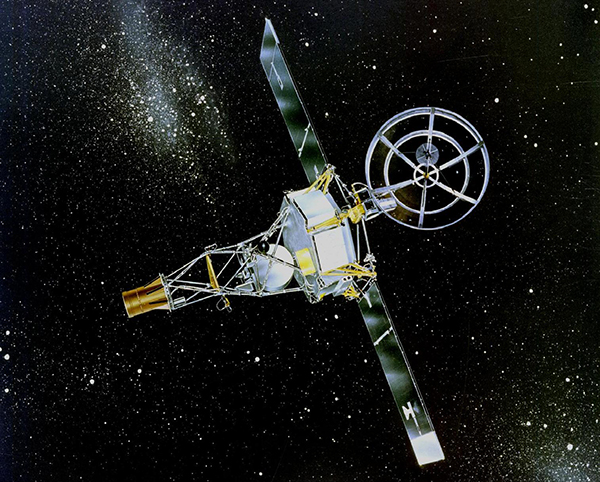
NASA’s Mariner 2 flew by Venus on December 14, 1962. Its surface temperature was measured at roughly 900 degrees Fahrenheit! Famed astronomer Carl Sagan was the first to predict Venus would be hotter than expected. His theory basically said the pervasive atmosphere of Venus would trap—not reflect—the sun’s heat and act like a greenhouse or a car window on a hot summer day.
Venus is almost the same size as the Earth and is often called our twin planet, but obviously Venus is not our identical twin. The clouds on Venus are mostly carbon dioxide at 96.5 percent of its atmosphere. Other ingredients include nitrogen and trace gases, including a tiny amount of sulfur dioxide. This air is also incredibly thick. Air pressure on Venus is 92 times higher than Earth at sea-level. This is roughly the pressure of being 3,000 feet below the water—that’s over a half-mile deep! Humans would not only melt on Venus, they would also be crushed to death.
I’m always amazed that radar, or radio waves, can travel right through just about anything. Well, not through an entire rock planet—but through its thick clouds! In the early 1990’s, NASA’s Magellan brought the surface of Venus into focus. It could resolve ground features as small as a football field. Magellan “saw” volcanic features and meandering channels carved out by molten fluid. It revealed tectonic scars and highlands, telling scientists that Venus is somewhat geologically active. The low amount of impact craters suggests a young surface—now considered to be about 500 million years old. For comparison, the moon’s surface is very old at around 3.6 billion years because there is no geologic activity. Our planet’s surface is very young with plate tectonics and active volcanoes.
Just one spacecraft—Japan’s Akatsuki—currently orbits Venus. It arrived in 2015 and is studying the planet’s atmosphere. NASA’s Parker Solar Probe is looping around Venus as it dives closer and closer to the Sun. Parker’s closest approach to the sun will be in 2024.
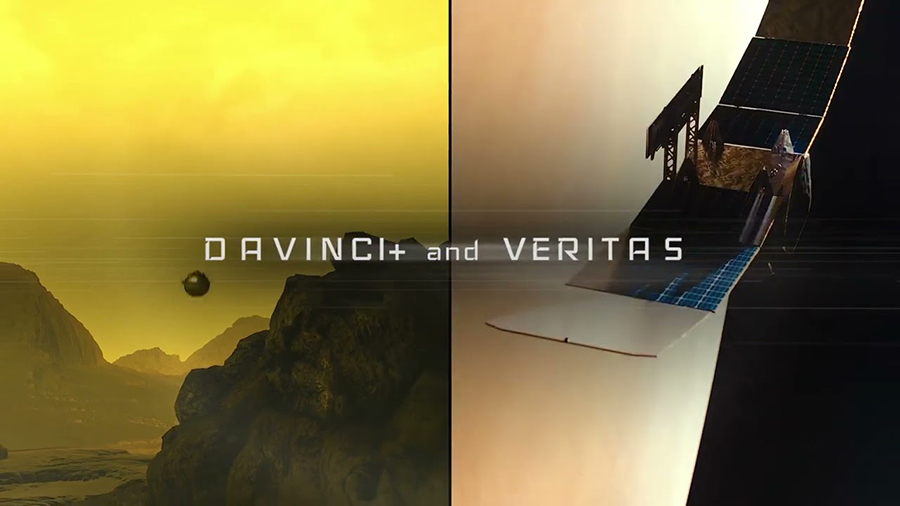
NASA recently approved two new missions to Venus—VERITAS (2028) and DAVINCI+ (2029). VERITAS will map the surface while DAVINCI+ will further study the atmosphere and also drop a small probe into the hellish clouds.
There are still many scientific questions regarding Venus. Did it ever have oceans? Is it still volcanically active? Is there phosphine in the atmosphere? Phosphine on Earth is a metabolic product of bacteria. If confirmed on Venus, could it be a possible life signature?
MIRROR FACE
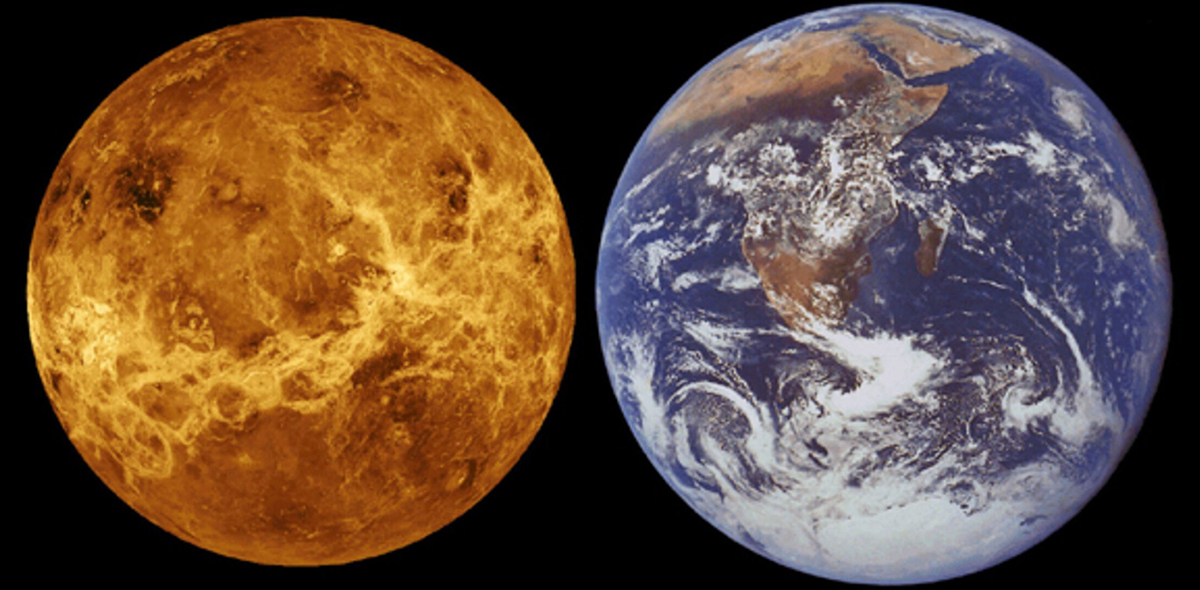
Almost any conversation we have today will tell us that we all see and feel things differently. When you look at Venus in the sky, or explore scientific discoveries, you will react in your own unique way. When we look at any object, we are often holding up a mirror to ourselves. Constellations are a fun and fast way to learn that what someone sees in the sky depends on who they are as a person.
Gazing at Venus is still striking on any clear night. I find it both comforting and fascinating. When I learn more about Venus and the cause for its blistering temperature, I think of Earth and what is happening here with climate change; I pause to think deeper. My hope is that the more we know about greenhouse gases on another world, the more it can help us here on Earth. Our sweltering neighbor planet can frighten me, but also reminds me to do my part—however small—to keep our planet a life-thriving oasis in space.
Scorching Sirius
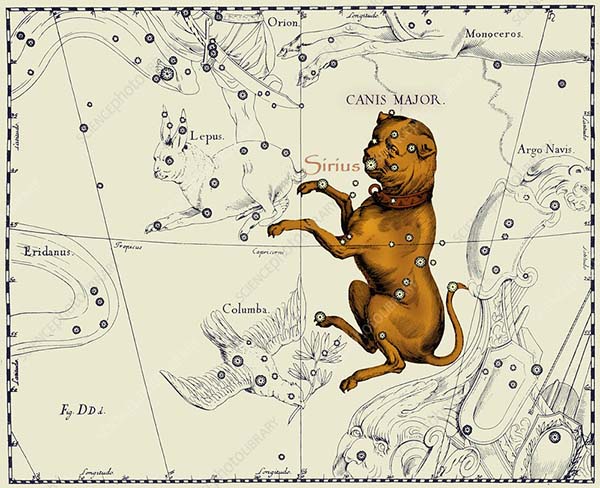
Sirius, or the dog star, is at opposition on January 28. This means we can see the brightest night star all night long. Sirius is part of many bright stars in the constellation Canis Major, or the Greater Dog. The name “Sirius” means “the scorching one.”
It wasn’t called that because it was hot—though the star is very hot at 17,000 degrees Fahrenheit on its surface. Sirius is twice as big, hot, and massive as our sun. If they shined side by side, Sirius would be 25 times more luminous! So why was it called as such? Long ago, the Greeks noticed Sirius returning in late summer, rising just before the sun. They believed that its light added to the hot and dry conditions and caused plants to wither and die and people to weaken. The arrival of Sirius became known as the “dog days.”
Is Sirius truly the cause, though? No way: It is located 8.7 light years away from Earth. By the time its scorching heat reaches us, the amount is miniscule.
2022 Sky & Space Calendar Preview
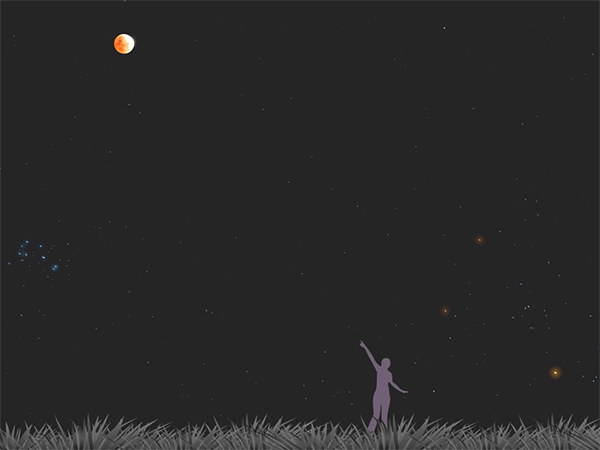
Two total lunar eclipses highlight the 2022 sky calendar. The first one arrives on May 15. You will need to stay up a bit late as the moon starts to disappear just before 9:30 a.m. CDT. The moon exits the Earth’s dark shadow much later—after midnight. The next lunar eclipse is on November 8. This one means setting your alarm clock as it starts just before 3:30 a.m. CST and ends with the moon-set at quarter to seven.
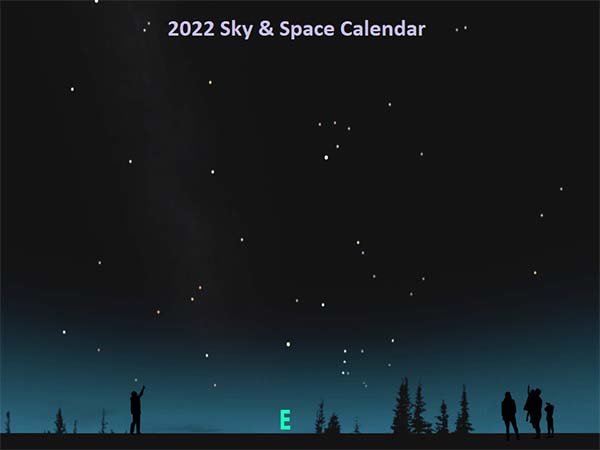
Mercury makes its best evening appearance this early January and again in late April and early May. For morning-watchers, the best time to catch the smallest planet is early to mid-February.
Venus can be glimpsed in the morning sky from mid-January to September’s end. You might also catch the brightest planet briefly in late December in the evening sky.
Mars spends the first half of 2022 climbing higher and higher in the morning sky. By July, it will start rising before midnight. By early December, the red planet is at opposition, rising in the east as the sun sets in the west.
Jupiter starts 2022 in the evening sky, but only until mid-February. By late April, the king planet will be high enough to observe in the morning sky. By mid-summer, Jupiter moves into the evening sky and stays there for the rest of 2022.
Saturn also starts 2022 in the evening sky, but only for a couple weeks will it be easy to spot. Catch the ring jewel in the morning sky in late March. By the summer solstice until year’s end, Saturn can be seen in the evening sky.
Sky Sights
Click maps to enlarge.
Press play to find Orion the Hunter and his two dog stars in the winter night sky.
Mars and the red star Antares pair up in the southeast morning sky. Antares will be a little brighter than the red planet and twinkle much more. As we start the year, these two red lights are very close. But watch them separately as both Earth and Mars move in their orbits.
Jupiter, Saturn, and Mercury make a great celestial trio in the early evening sky. The Moon will help guide you from January 4-6. By January 12, Mercury and Saturn will be at their closest.
Venus moves over to the morning sky at the end of January. Mars shines nearby but will be much dimmer. Watch for the waning crescent Moon on January 28-29.
January Star Map
Sign Up
Receive this newsletter via email!
Subscribe
See the Universe through a telescope
Join one of the Milwaukee-area astronomy clubs and spot craters on the Moon, the rings of Saturn, the moons of Jupiter, and much more.
Follow Bob on social media
Twitter: @MPMPlanetarium
Facebook: Daniel M. Soref Planetarium


